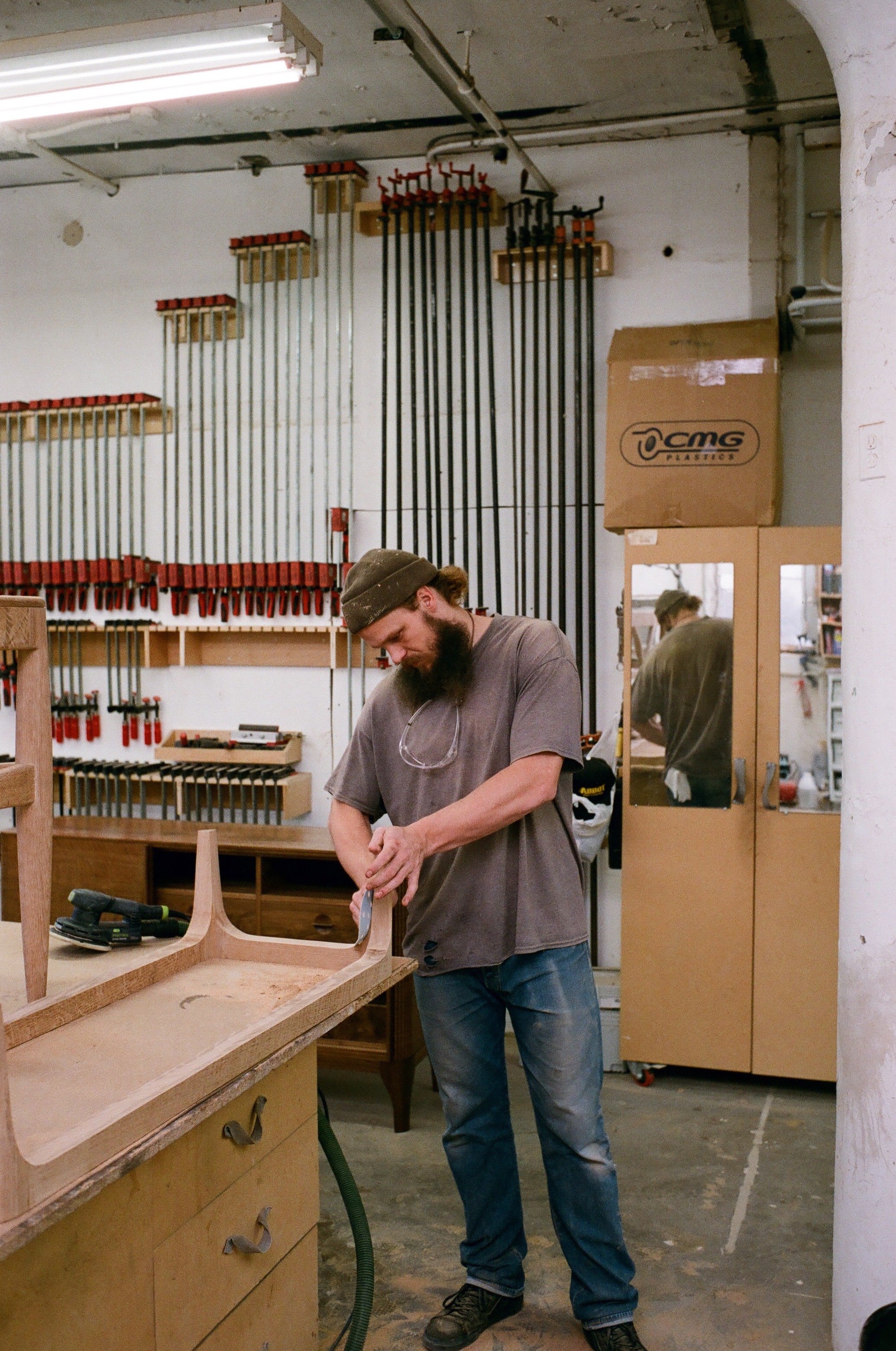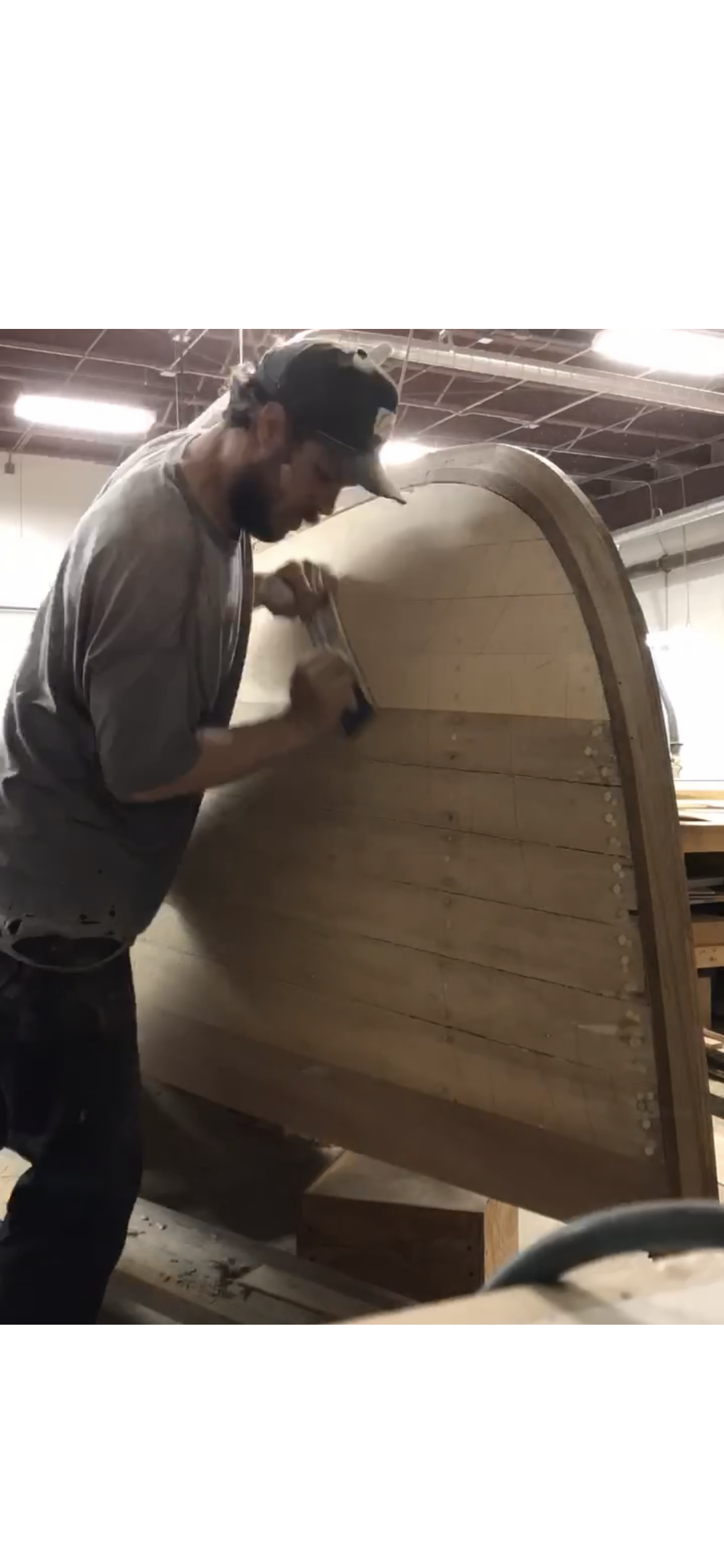Nick Hoversten
During my time at Stanford University I found myself back in the wood shop after a number of years hiatus. My journey back into woodworking began with a curiosity in wood carving. I began carving wooden sculptures as part of my studies in art and art history and I knew I would never be able to stay apart from the wood shop for long again. It was during this time that I also began to build custom furniture on the side, kindling my interest in functional design and aesthetic.
A job teaching art and art history led me to London and my curiosities led me to reading all I could about the traditional modes of woodworking and soon it wasn’t enough to read about it. I began honing my skills in traditional wood joinery techniques and in the crafting of wood with traditional tools. Outside of my job teaching, I spent all of my free time in the wood shop, hunkered over a pile of wood with hammer and chisel in hand. I soon realized that what I truly wanted out of a career didn’t lay in the classroom, but the wood shop; and my studies and practice landed me a job crafting high end furniture for Poritz and Studio in Brooklyn, NY.
It was in this job that I was hurled into a learning curve exponentially steeper than any I had experienced before. The level of craftsmanship and necessity of precision on the pieces we built were so demanding I often came home in tears doubting if I had what it took to succeed in this business. This went on for at least six months before things finally began to turn around. I worked there for two years and in that time I saw my abilities in my craft deepen and broaden more than I previously knew was possible.
From there my curiosities led me north to Maine, the epicenter for American boatbuilding, timber framing, and Windsor chair making. Interested in all three, I found a job in a boat yard, working for a 3rd generation boatbuilder who had probably forgotten more about boat building than I would ever know. Under his tutelage I learned the age old trade of wooden boat building as well as how to bring my carpentry skills to bear on modern boats.
Through all of this time my personal study of wood and its properties, characteristics, and applications continued. I found out why certain woods are used in certain areas, climates, or trades. I found out which woods have high tensile strength and which woods have high concussive strength. I found out which woods resist rot and which ones repel bugs and why. Not all woods are created equal and the study of wood and its uses is never ending.
Woodworking is a hobby for many, a job for some, and a calling for a few. I’ve literally travelled the globe in my studies and practice of woodworking. Through it I feel connected to the long line of shipwrights and cabinetmakers and joiners whose collective knowledge has passed on to me to keep alive. I lay awake at night thinking of what to make next and how to make it. I’m doing exactly what I was put on this earth to do; and for that I am grateful.





